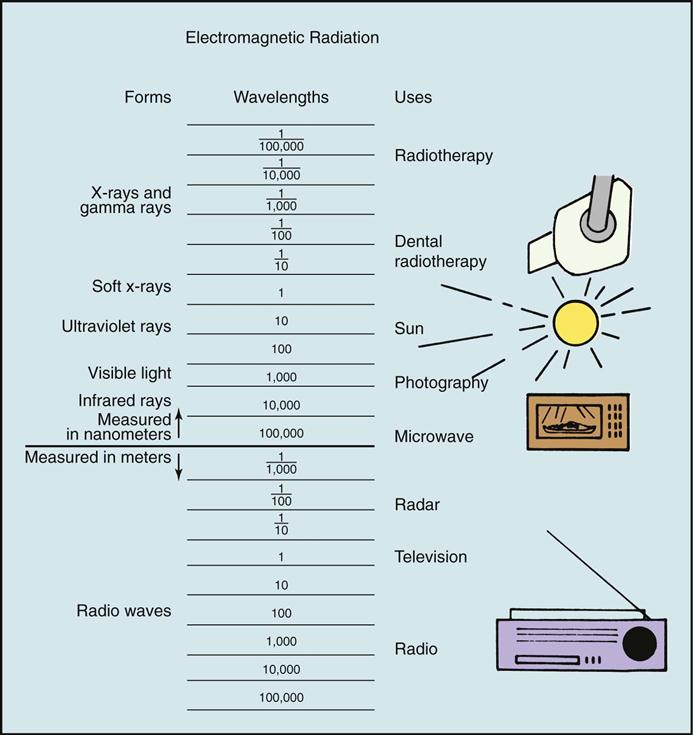

For instance, radiation cannot be focused to an area of size smaller. A common measure of electromagnetic radiation is wavelength: the distance between waves. National Aeronautics and Space Administration. of synthesizing a diffractive element that focuses electromagnetic radiation. There are other types of electromagnetic radiation that human eyes cannot see. "Introduction to the Electromagnetic Spectrum" NASA Science. But visible light is just one form of light. Retrieved, from NASA Science website: MLA

Introduction to the Electromagnetic Spectrum. National Aeronautics and Space Administration, Science Mission Directorate. This radiation cannot be focused by convex or concave lenses. Equation (28) cannot be solved analytically for an arbitrary point of the image. Being electromagnetic waves with a wavelength shorter than those of UV light, x-rays offer. Top of Page | Next: Anatomy of an Electromagnetic Wave A solution to the problem of plane electromagnetic waves focused by an. This explainer will focus on the region between visible light and. Radiation is defined as the emission and transfer of energy via high-energy particles (photons) or electromagnetic waves. Instruments have to be positioned above Earth's energy-absorbing atmosphere to "see" higher energy and even some lower energy light sources such as quasars. The electromagnetic spectrum is the range of all types of electromagnetic radiation. Electrons, being charged particles, can be focused and steered using relatively simple electrostatic lenses (X-rays, being electromagnetic radiation, cannot. While our atmosphere is essential to protecting life on Earth and keeping the planet habitable, it is not very helpful when it comes to studying sources of high-energy radiation in space. These regions of the spectrum with wavelengths that can pass through the atmosphere are referred to as "atmospheric windows." Some microwaves can even pass through clouds, which make them the best wavelength for transmitting satellite communication signals. There is, however, also a concern that long-term exposure to weak fields might have health effects due to an as-yet unknown mechanism. It is well known that exposure to strong fields can result in acute effects, such as burns the mechanisms behind such effects are well established. A technician will carefully calibrate the device to target the area of the body affected by cancer. Electromagnetic fields (EMF) are ubiquitous in modern society. This type of radiation is administered via a machine. There are two primary types of radiation used to treat breast cancer. Some radiation, such as visible light, largely passes (is transmitted) through the atmosphere. What Types Of Radiation Treatments Are Recommended For Breast Cancer. We do not yet know the detail of how plants conduct photosynthesis, but in green plants, chloroplasts within cells are known to play a crucial role.Seeing Beyond our Atmosphere - NASAspacecraft, such as RHESSI, provide scientistswith a unique vantage point, helping them"see" at higher-energy wavelengths that areblocked by the Earth's protective atmosphere.Įlectromagnetic radiation is reflected or absorbed mainly by several gases in the Earth's atmosphere, among the most important being water vapor, carbon dioxide, and ozone. In other words, sunlight is a source of life on earth.

All animals, including humans, live by eating these plants, thereby absorbing the oxygen produced during photosynthesis and indirectly taking in the energy of sunlight. In short, photosynthesis stores the energy of sunlight in the form of glucose. Planck was the first to recognize that the energy of electromagnetic radiation cannot be conceived as a continuous quantity which can be divided without. They then use this glucose to produce such materials as starch and cellulose. Plants use the energy of sunlight to synthesize glucose from carbon dioxide and water. Photosynthesis also is a type of chemical reaction. This is called a "photochemical reaction." Photochemical reactions do not occur with infrared light, but happen primarily when visible light and ultraviolet rays, which have shorter wavelengths, are absorbed. electromagnetic radiation, such as radio waves, microwaves, infrared, visible light, ultraviolet, x-rays, and gamma radiation () particle radiation, such as. Sometimes, however, materials do chemically react to light. There are also cases where fluorescence or phosphorescence is emitted, but most of the time materials do not change.


 0 kommentar(er)
0 kommentar(er)
